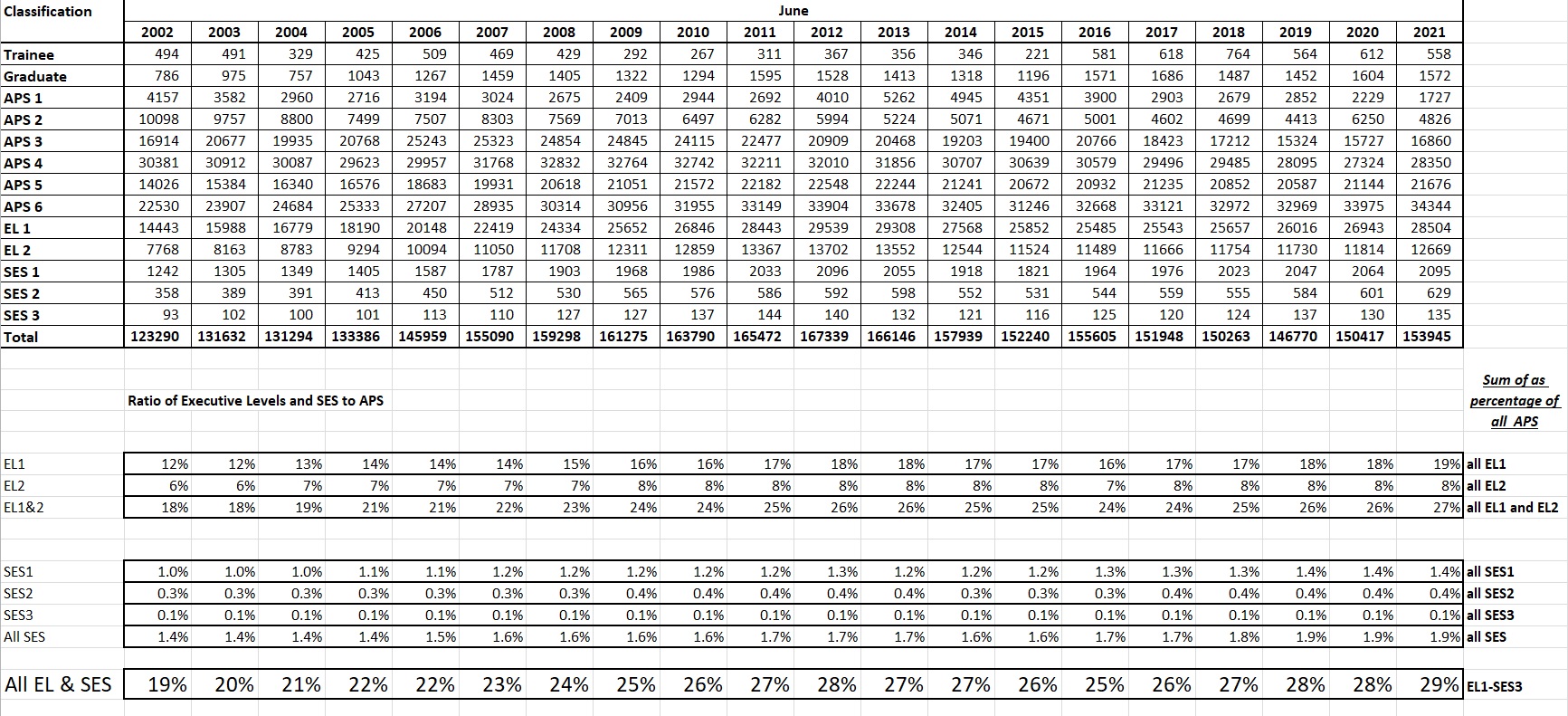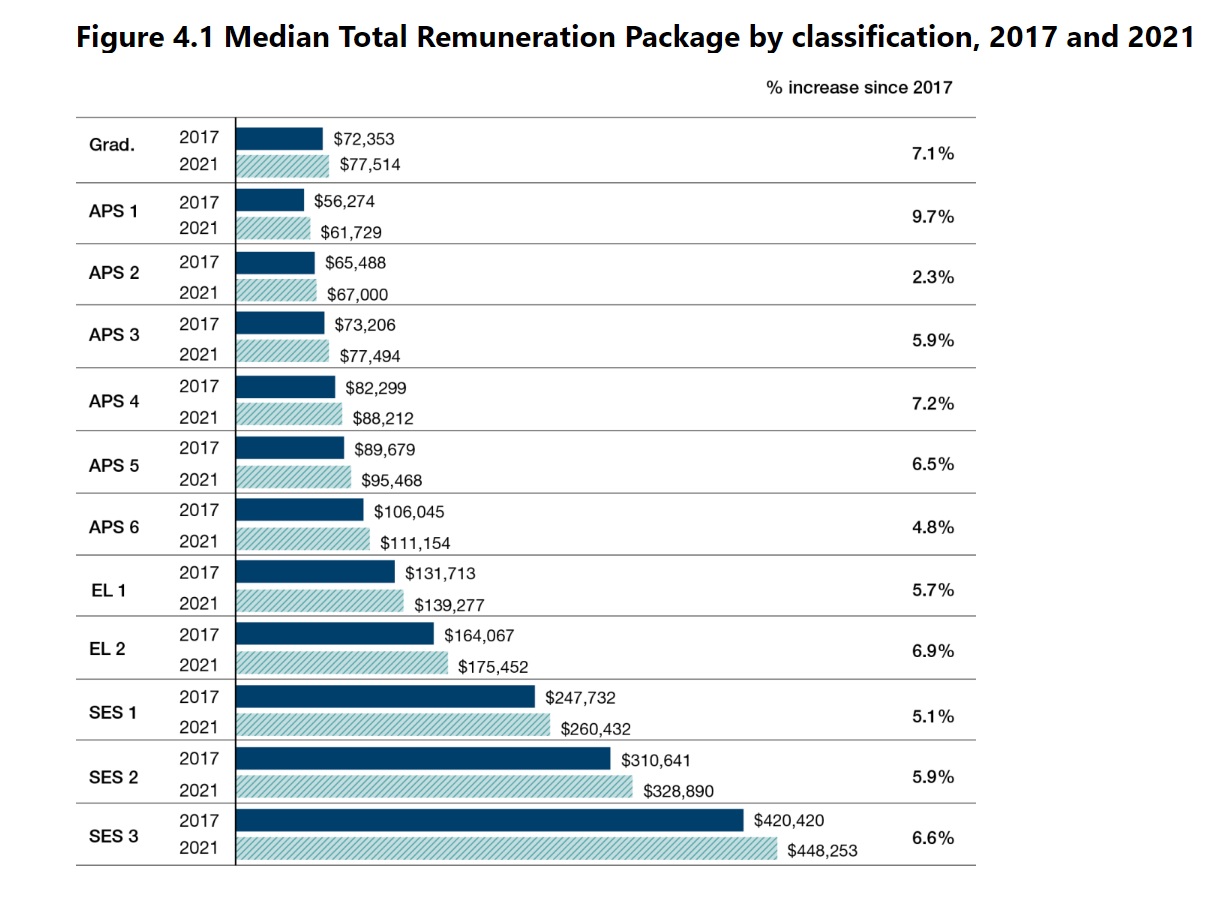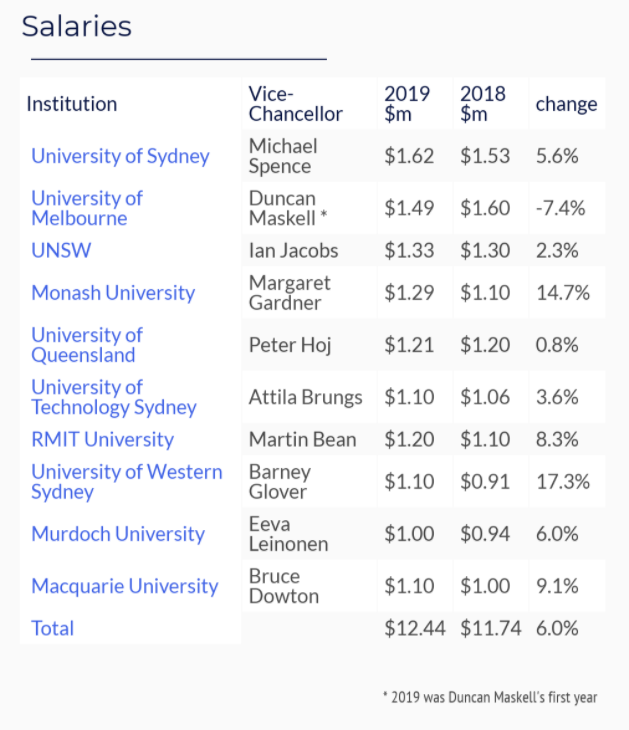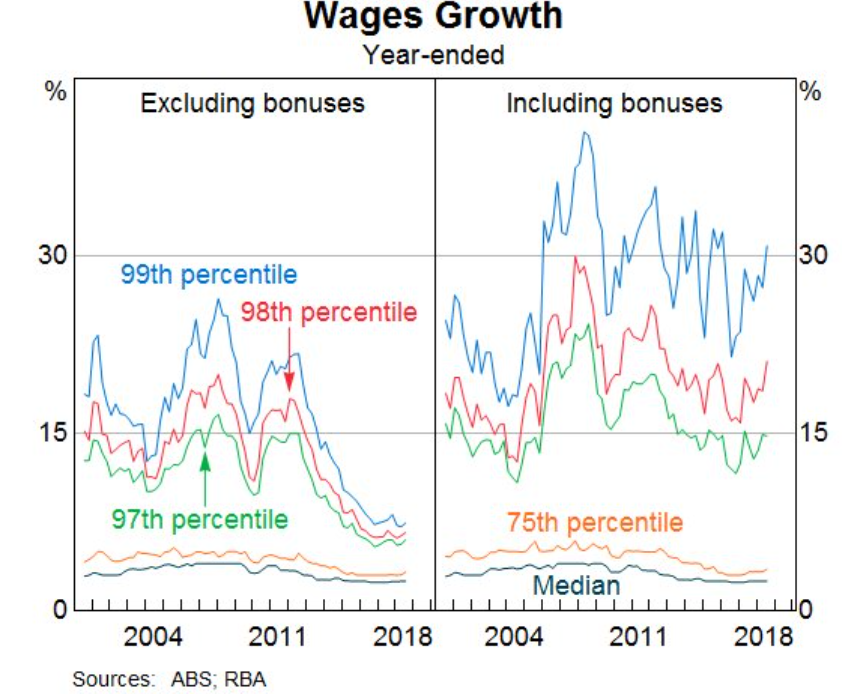Analysis of public sector annual reports by The AFR shows that at least 24 public servants and executives of government-owned corporations received total remuneration of more than $1 million in 2021-22.
The list is headed by NBN Co CEO Stephen Rue, who was paid $2.93 million, up from $2.64 million in the previous financial year. Meanwhile, Snowy Hydro’s former CEO Paul Broad received more than $2.7 million in pay and bonuses, while Australia Post CEO Paul Graham was paid more than $2.08 million:

Then there are Australia’s university vice-chancellors, who are dining on average salaries of more than $1 million while their rank-and-file staff struggle on temporary contracts:
Earnings of Australia’s 1 percenters soared from the mid-2000s by around 30% per annum once bonuses are included, while the real incomes of the median Australian worker stagnated:
Given senior public servant salaries are more or less benchmarked against those of the private sector, this extreme earnings growth in the private sector gave justification for lifting the salaries of senior bureaucrats and GBE executives to their current absurd levels.
The next time you hear the business lobby claim that an increase in wage growth cannot occur because of [insert bogus claim], think of the above chart and ask why senior executives haven’t shown the same wage restraint.
The whole ‘marketisation’ of government agencies and services has clearly failed, delivering over paid fat cats, endless rorting and poor outcomes for taxpayers.
Over the course of 20 years the ratio of Executive and Senior Executive positions across the whole APS has ballooned from 19% to nearly 30%. That is from one in every five positions being ‘Executive’ or above, to one in every three. So for every three people the public bumps into behind the glass at Centrelink or Tax there is someone earning more than $120 per annum, and highly likely to be a beneficiary of a defined benefit superannuation scheme. There is absolutely no work value driving this expansion of executive level positions, it is a political and executive compliance value.
The below charts clearly show just how the Australian public is being milked. Those at the very top have been largely political appointments, and they make sure the senior ranks underneath them are ‘on song’ with whatever political narrative is spewed out from the top, regardless of what is in the interests of the people of Australia.
This is how Australia ended up with Robodebt. This is how Australia ended up with an utterly failed census. This is how access to medical and personnel records has become such an issue that there is a Royal Commission into Veteran Suicides. This is why when you call Services Australia, the ATO, Medicare or Centrelink you are almost certain to spend a disgraceful amount of time on the phone, will then be told your call is being recorded for ‘coaching purposes’, and will be able to speak to someone who is only allowed to provide answers from a script, regularly in almost unintelligible English, and will almost certainly try to fob you off and online to sort your issues yourself, and is fundamentally not interested in helping you, or any other member of the Australian public. It is not the fault of the person on the end of the line, because they are told what to say to you. It is the fault of the Executives and Senior Executives who use such people as cannon fodder to prevent the public from getting their concerns addressed. This is how energy policy means Australians get reamed and governments throw their hands up and say there is nothing they can do. This is how the Population Ponzi never gets mentioned or looked at.
This is how a series of woeful public decisions are made and implemented. There is a top heavy structure in place to make sure the public aren’t getting served the way they want, and which is there to make sure that the lower ‘people serving’ levels or the types compiling policy reflective of the Australian community, are watched over by a wonderfully remunerated Commisar class making sure anything distasteful at a political or SES level is weeded out of strategic decisionmaking. And many of those at these levels have their own variant of the ‘Cult of Personality’ alive and well within their branches and Directorates. The data averse, narrative resistant, whim based and arbitrary decisionmaking environment this represents is reflected in numerous APS surveys suggesting the lower levels have lost faith in their own chiefs.


It’s time to drain the swamp and implement uniform salary structures for government departments, government-owned corporations, statutory authorities and universities. Bring them into line with the rest of the public service workforce, and make them accountable.



